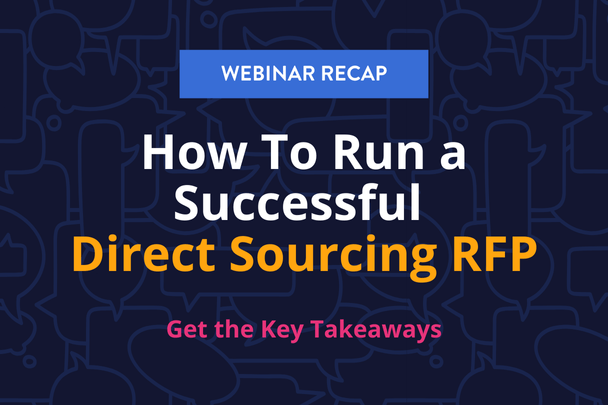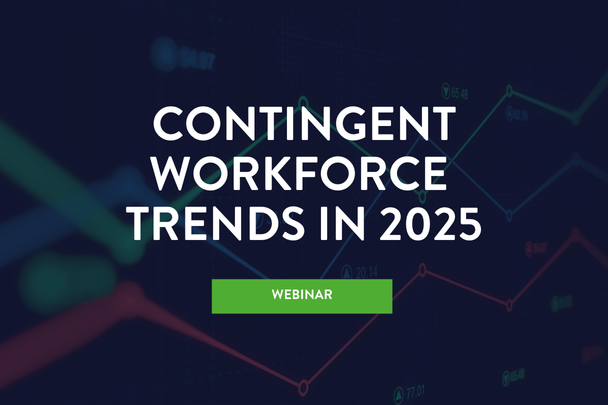What Are the Biggest Risks to a Contingent Workforce Program?
There are risks attached to just about everything. Ride a bike, and you might fall. Hike the woods, and you might get lost. Look away during a game, and you might miss an epic play. Fear of risk can hold you back. This may be why the initial growth of the contingent workforce was so slow. It started in 1946, but took half a century to really take off. Yet today, some organizations manage a blended workforce with up to nearly 50% contingent workers. How do they do it? And, what are the biggest risks a company faces as it increases its use of contingent labor?
What are the challenges a company faces as its contingent workforce grows?
The strategic use of contingent labor offers a growing company a means to accelerate growth. Contingent talent can supplement or support internal resources to create greater flexibility in responding to market opportunities, but it brings its own set of challenges relating to a lack of visibility, consistency, rising costs and compliance. Each of these can give rise to risks that must be managed and minimized, such as worker misclassification, security concerns and inconsistent standards and processes for worker screening, quality, on- and off-boarding and knowledge transfer, among others. What’s behind all these risks? Uncontrolled and unmanaged growth. Managed Service Provider (MSP) programs offer a proven solution.
How does uncontrolled and unmanaged growth increase contingent risks?
When managers first start to hire contingent workers, whether to execute a special project, fill knowledge gaps or add unique skills, they tend to follow their own rules of engagement, working with their own roster of talent supply partners. Multiply the number of managers in need of talent and you multiply the number of processes utilized to find, onboard, and manage this talent. As the use of contingent talent mushrooms, so does the complexity of managing an increasing non-employee percentage of an organization’s total workforce. As a result, businesses struggle with a lack of visibility and limited or nonexistent governance for their contingent workforce programs, opening themselves up to risk. The largest employers solved this dilemma, first with technology via vendor management systems (VMS), and perhaps more importantly, with dedicated oversight resources via MSP programs. Growing mid-sized firms can also minimize risk and learn from the experiences of MSP early adopters.
What is an MSP?
An MSP is a third-party expert that manages a contingent workforce program. It serves as a liaison between the client organization and the vendors that supply talent. The MSP acts as a central hub for all aspects of a contingent workforce program. It establishes consistent standards and operating protocols for all participants in the program. The MSP ensures strong governance and provides the business with visibility into all aspects of the contingent workforce program. For example, an MSP:
- Works with managers to identify staffing needs and create a strategy for fulfillment
- Works with staffing vendors to rationalize bill rates and track quality standards and metrics to optimize supplier performance
- Ensures workers are appropriately classified as supplied vendor talent rather than internally employed talent
- Creates and distributes job requisitions to staffing suppliers
- Manages the program technology
- Consolidates records and billing to streamline vendor payments
- Pays all vendors
- Provides analytics to track performance and identify opportunities for improved workforce planning
The ultimate goal of an MSP is to ensure an organization can focus on managing its business, rather than managing its contingent workforce.
What are the compliance issues and risks associated with the use of contingent labor?
One of the primary roles of an MSP is to manage risk and compliance relating to:
- Co-employment. As both the staffing agency and the client share certain responsibilities for a contingent worker, it is important that all parties understand the staffing agency employs the worker, even though the client directs the work that is performed. Both the worker and the client supervisor must understand these distinctions and act accordingly to avoid any confusion. For example, contingent workers may work alongside an employed team, but they are not entitled to the same benefits and perks as internal client employees.
- Worker classification. To avoid tax fines and penalties for misclassification, there must be a process to vet contingent workers and determine whether a worker is employed as a W-2 employee of a staffing agency or qualified according to business profile and federal/state guidelines to operate as a 1099 independent contractor.
- Other compliance considerations. When supplier contracts are decentralized, it is difficult to ensure that all suppliers are meeting contractual obligations relating to things like background checks, on- and off-boarding procedures, bill rates and service level agreements.
How does a mid-market firm know when it is ready for an MSP?
As a mid-market firm grows and expands use of contingent talent, it often struggles to maintain strong oversight of its contingent workforce. Whether you have a total workforce of 500 or 2,000, enterprise visibility into the contingent workforce is usually a challenge. Hiring processes are decentralized. Standards are inconsistent, and it would be difficult to answer questions like these:
- How much of your total budget is allocated to contingent labor?
- How many contingent workers do you have currently on assignment?
- What are they doing and where are they working?
With as few as 50 contingent workers, it is likely the organization is overpaying for talent and putting itself at risk. It’s time to take steps to find the right team, technology, and workflows to create a more cost-effective and efficient way to manage the contingent workforce.
How can an MSP make a difference in terms of costs, compliance, and technology?
An MSP brings clarity to chaos. When contingent talent sourcing looks and acts more like the Wild, Wild West than a corporate procurement program, it’s time to wrangle all the recruiters and agencies into a single corral. The wrangler is the MSP. It serves as the central clearinghouse for a group of approved staffing vendors. It manages all the job requisitions, talent placements, timekeeping, and contracts and billing, while providing visibility to how an organization uses (and what it pays for) contingent talent. An MSP partner is an expert in VMS technology and ensures a contingent workforce program is managed with less risk and greater efficiency at a reduced cost. With strong governance and consistent standards in place, an MSP partner can add even greater value, for example, providing guidance with strategic workforce planning, such as layering direct sourcing into the program as another talent channel, and helping advance the organization’s diversity, equity, and inclusion goals.
Reduce contingent workforce risk to maximize rewards
Remember when you couldn’t wait to grow up? To become a teen, drive a car, leave school, move out, get that first apartment, first real job? As wonderful as it is to transition from one phase of life to another, it can also be awkward because it requires change, and change is often uncomfortable. You have to let go of the familiar and embrace the unknown. It’s the same in business. You bring in lots of new talent to help you grow and expand your company until it seems you’re bursting at the seams. You’re spending more and more time managing all that talent rather than putting that talent to work. It may be time to graduate to a new way of managing contingent talent with the support of an MSP partner. If you are unsure whether you’re ready to take that next step in building a workforce that can carry you into the next phase of growth, you don’t have to do it alone. Experts in workforce management can help guide you in how to reduce risks and maximize rewards in contingent workforce management with an MSP solution.
In future posts, we’ll explore all the ways that an MSP can help control costs, as well as scaling MSP and supporting HR with MSP.








